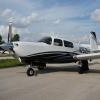-
Members Online
- Rmnpilot
- Av8trinxs
- wstull87
- Vance Harral
- ProtoFly
- Jedei120
- jetdriven
- MarkD34M
- jcolgan
- MikeOH
- M20F
- Cfidave
- vik
- wood_fly
- warrenehc
- Jim F
- TCC
- 231MJ
- Reek778
- Guy123
- midlifeflyer
- ArtVandelay
- Bob E
- rklems
- MDMooney
- Logwes21
- eman1200
- Dick Denenny
- theshick
- redbaron1982
- ta2too
- rbmaze
- Marcopolo
- Schllc
- LANCECASPER
- Justin Schmidt
- Yetti
- Crawfish
- pkellercfii
- 1980Mooney


Recommended Posts
Join the conversation
You can post now and register later. If you have an account, sign in now to post with your account.